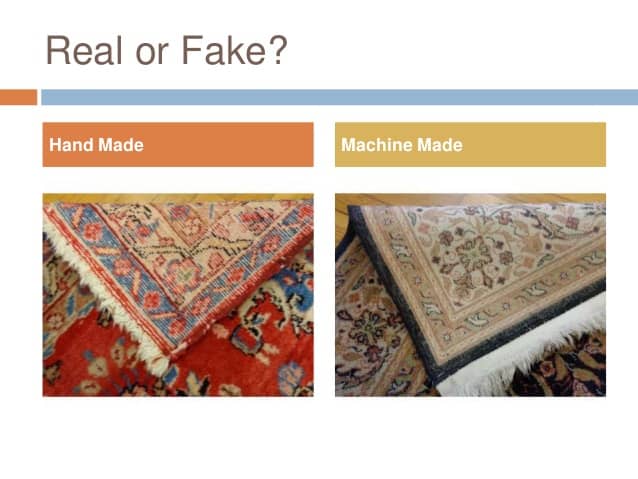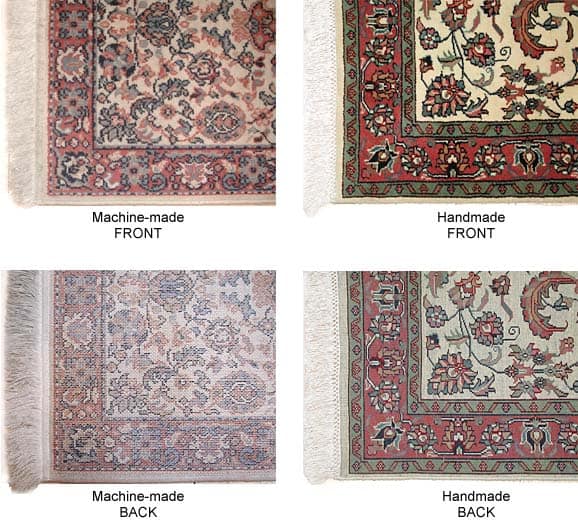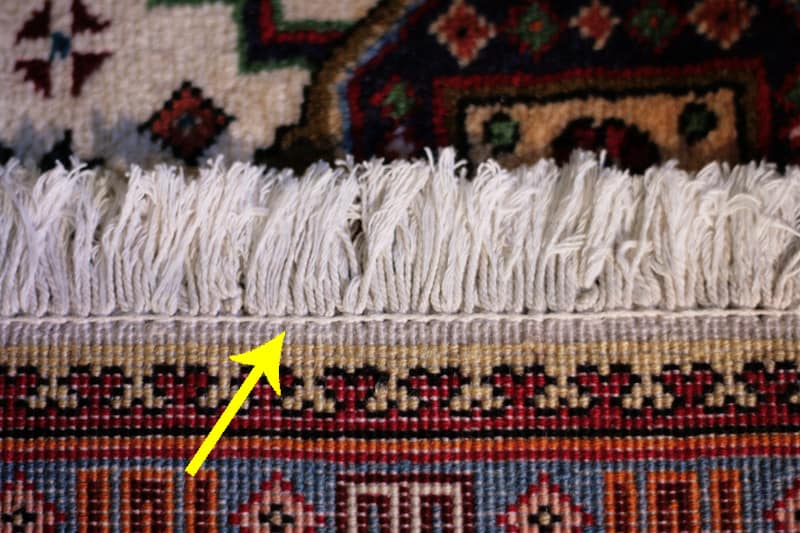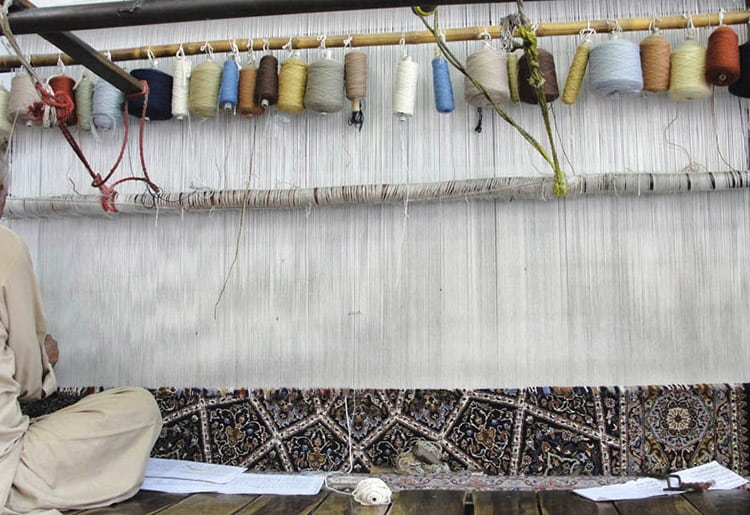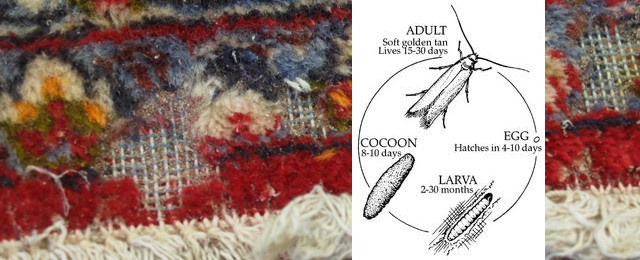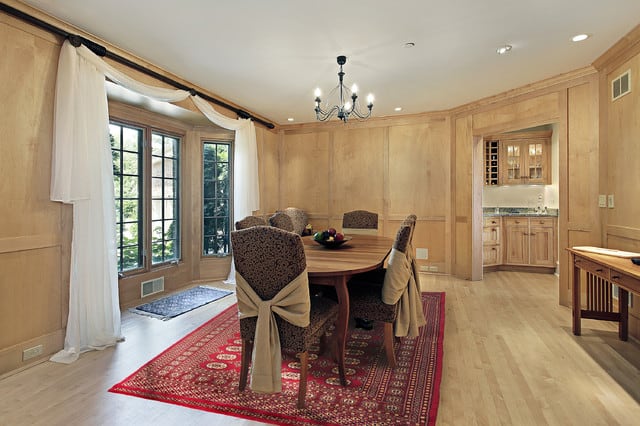If you want to buy an Oriental rug, know that you are about to make a great investment. Oriental rugs are timeless classics that add the ideal amount of charm and warmth to any room. However, it is crucial what you get your hands on is an authentic Oriental rug and not one of the many fakes sold as the real thing out there. Below are seven signs that can telltale that a rug you are about to buy or the one you have just bought is a fake.
Before we begin, so that you know, there is NO way to be able to authenticate a genuine Oriental rug from sites like Craigslist and eBay, so better stay away from online purchases. That said, here are the things that will reveal the whole truth…
1. The rug has a hard plastic back
Oriental rugs are hand knotted, which means that they always come with a soft back. Also, the patterns you will see at the back will match the ones you see at the top pile. In other words, it would be like looking the rug in the mirror.If the rug you have your eyes on has a back that’s not a mirror image of the front, then it’s a fake.
Now, if the back is also plastic, this tells you that the top pile is made from a synthetic material when it should have been wool. So, you are looking at a rug made from polypropylene, acrylic, nylon or polyester. These materials have the exact same properties as PVC piping as they are all made from petroleum. You should know that petroleum products release VOCs (volatile organic compounds) into the environment they are in to, and it can never be a good thing. Besides, synthetic rugs are meant to be aesthetically pleasing but don’t last long, and you will quickly need to look for a replacement. Regarding its lifespan, it will last anywhere from 3-5 years.
The plastic back is what holds the rug together. It is probably latex glue, and there is no doubt that it is not healthy to have such materials in the home and around you and your loved ones, especially if someone in the household has latex-related allergies.
2. The rug colors bleed
Oriental rugs are dyed with natural vegetable dyes. Makes sense, as when people first started hand knotting rugs many centuries ago, there were no chemical dyes available. So, you may come across beautiful pieces that are passed as authentic Oriental rugs, but testing whether its colors bleed will help tell you if it’s a piece of royalty and history. Don’t be fooled if the dye appears to be exactly what you are looking for. It should also be colorfast so that the rug can last for many decades.
Although it’s slightly difficult to determine, there are ways. Take a damp cloth and leave it on the rug all night through. In the morning, if you see that the cloth is being colored, then it’s not a colorfast dye; hence not stable. Of course, this includes you are allowed a 24-hour consignment period by the rug dealer, or you got yourself a money-back guarantee. If you are not offered any of those two, pack your bags and leave. Chances are you have entered a shady store.
Also, know that many rugs come with chemical dyes that are relatively stable. However, when dampened, they release toxic chemicals that are harmful. And, as a final piece of advice for this section…NEVER ever buy a rug that’s washed with a fugitive dye. If you make the mistake and spill any liquid on it, you will end up with a huge mess on your rug and home. This is because those that have dyed the rug with a fugitive dye did so to shortcut the dyeing process. The rug was not rinsed as supposed after the dying phase and the dyes are left fugitive.
The same goes if you see or smell ink. Many rug dealers chose this process to cover imperfections on their rugs, such as fading, cuts, holes, ad bald spots.
So, when you buy a rug, especially if you want an authentic Oriental rug, make sure that they type of dye is mentioned on the invoice. It will allow you to claim your money back, in case you want to return he rug.
3. The rug fringe is glued on or sewn
A hand-knotted Oriental rug is soft to the touch, both on the top and bottom. As for its fringe, it will never be sewn on, so pay attention to that, too. The fringe on Oriental rugs is what part of what holds the rug together. So, it is beyond a design element. It’s also a structural one, too. The decorative knots that appear on the fringe of an Oriental rug are tied around the structural fringe.
Beware as some rug dealers will want to make their pieces appear hand knotted and add fake fringe to them to make it believable. You can tell by just flipping the rug on its back. Is the fringe sewn on or glued on? Then your “Oriental” rug is a fake.
4. The rug is not hand knotted
Every knot in genuine Oriental rugs should be meticulously tied by hand. If you see anywhere on the rug of your interest that it says “hand tufted” then it’s not hand knotted. Hand tufting is an easy technique where a tufting gun punches a design into a canvas backing that’s been stretched behind a stencil. It doesn’t require any skills or heavy training and definitely puts the rug’s structure at risk of falling apart. With a tufted rug, you will have a rug in the home for about 7 years while with a real hand knotted Oriental rug, you can rest assured you’ll have it around for more than 50 years!
5. It is not made with wool
As previously mentioned, rugs with a synthetic back are not authentic Oriental rugs, which are made from wool. Wool is flame retardant, antibacterial, and hypoallergenic, which means you will never have any allergy issues with a woolen rug (unless you have an allergy to wool!).
6. You got a “steal” on it
Hand knotting demands an enormous amount of time and skills. This makes hand knotted wool rug costly. So, if your rug was unusually cheap, better double check if it’s made from a synthetic material, made with unstable dyes or hand-tufted.
Also, beware the out of business sales. It usually is a trick, and you are NOT getting anything at 70% off. Most of those dealers will want just to truck out the valuable stuff and truck in new, lower quality merchandise. The same goes for offers around a holiday, say, the Fourth of July or Labor Day. Clearly, you need a reliable rug dealer to get a high-quality, authentic Oriental rug.
Want to know more about Oriental rugs and how to take proper care of them? Or do you fancy Persian rugs? What? Don’t know the difference between Persian and Oriental rugs? No problem! Check our blog out!


